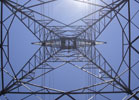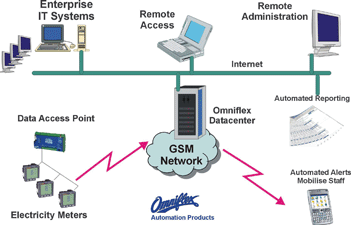Web Based Remote Monitoring
Reliable Web based solutions for monitoring the condition or status of remote assets no matter where you or they are located.
Read more...
Reliable Web based solutions for monitoring the condition or status of remote assets no matter where you or they are located.
Read more...
SIL rated alarms systems, wireless telemetry and web based inventory tracking systems. Connects to your existing tank gauging.
Read more...
Advanced proven Impressed Current Cathodic Protection Systems incorporating Remote Monitoring and Control. New or retrofit existing sites.
Read more...
Specialised monitoring systems for Radiological environments including
nuclear power stations, storage facilities, PET
Centres etc.
Read more...
Real time energy, water, gas, air and/or steam monitoring for industry, commercial buildings and campuses. Meets reporting standards and reduces cost.
Read more...
Remote Temperature monitoring systems tailored for pharmaceutical and food industry applications from laboratories to warehousing. Meets reporting standards.
Read more...
Process Alarm Systems to IEC61508 and Event recording to sub-millisecond resolution making plants safer and reducing downtime.
Read more...
Upgrade your legacy alarm systems to current safety standards with minimum plant disruption. Custom solutions to suit individual needs.
Read more...
Data2Desktop provides an end-to-end solution to your remote
monitoring needs. Data2Desktop relieves you of the technical
complexities of implementation, with rapid low risk deployment.
Turn your organisation into a Real Time Enterprise within days.
more...

Remote Monitoring Specialists
Instrument PSUs

Priced to perfection
DIN Rail mounted
All Round Protection
Adjustable 24Vdc o/p
Home > Press Release
FOR IMMEDIATE RELEASE

With the cost of energy and power rising and power saving becoming an issue at the forefront of management minds, the application of monitoring technologies comes to the fore. Since all enterprises are billed on their usage of power by Eskom or respective municipalities on a monthly basis through meter readings, the surprise comes at month end when the bill arrives and it is too late to manage anything. Many plants do monitor the bulk supply and even have check meters in place to verify the billing meter; however getting access to the data on say an hourly basis can be problematic, and in addition, usage to key areas is unknown in many cases, and deemed to be an expensive exercise.
The issues are:
Omniflex has developed a system of Scaleable Telemetry Outstations for GSM cellular networks to support general packet radio service (GPRS) transmission of data from remote outstations that require monitoring. "The suitability of GSM networks has become a reality due to their coverage, reliability and low cost of ownership," comments Ian Loudon, Omniflex sales manager. "There is no infrastructure cost to consider as you have with in-house-based systems and you can extend your monitoring country-wide; in fact it is possible to use the technology outside the countries' borders too."
So how hard is it to implement?
What is in a system?

Features
Loudon says that the Omniflex solution with the Web-based remote monitoring systems infrastructure integrates everything and puts data into the right hands and allows management to allocate responsibility and accountability by measuring and monitoring those resources, consolidating the information and automating the reporting process, automating the alarm notifications and empowering people to make and take decisions that save the organisation money.
Omniflex interfaces directly with plant metering equipment and by preference through serial communications eliminating duplication of measurement and any measurement errors since clients are then monitoring exactly what they are being billed for. This however is reviewed on a site by site basis according to the constraints and metering in place. Determining and apportioning utility billing requires more metering and monitoring across the plant or facilities to improve the management view of the power usage of the areas under consideration. A power audit is often the best course of action to identity the areas using the most power and thus potential for savings. The 80/20 rule applies most often in these cases and power savings can be generated without having to monitor or measure down to the lowest levels.
Many management decisions can be made by simply understanding the consumption profile and reviewing corrective action outcomes. The benefit of this is that events can be monitored on a daily or hourly basis instead of only at month end when billing takes place. Load shedding effects can thus be reviewed and optimised in realtime.
For more information contact Ian Loudon, Omniflex, +27 (0)31 207 7466, sales@omniflex.com, www.omniflex.com
For further information on this press release please contact sales@omniflex.com
Product Ranges